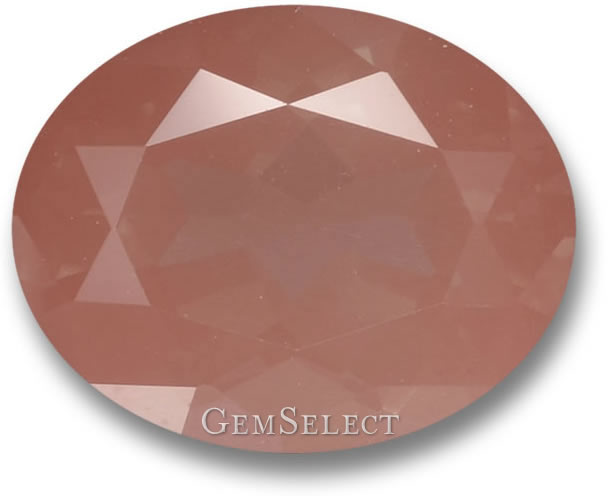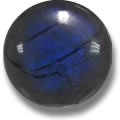Andesine Labradorite Gemstone Information

About Andesine-Labradorite - History and Introduction
Andesine-labradorite burst onto the scene in 2003, making it a fairly recent addition to the gemstone world. You'll often spot it in shades of reddish orange, sometimes with hints of green and yellow. What sets it apart? That subtle metallic shimmer, or labradorescence, which changes colors based on how you look at it. It's not as well-known as some gems, and for a while, there was quite a bit of debate about where it really came from.
The issue stemmed from initial sales without clear info on color treatments. Plus, its origins were murky at first. It started out marketed as 'andesine,' named after discoveries in the Andes Mountains of South America. But later checks revealed it was actually a treated form of labradorite. To clear things up, the name became 'andesine-labradorite.' You might also hear it called 'andesine,' 'red labradorite,' 'Congo sunstone,' or simply 'red feldspar.'
Identifying Andesine Labradorite
Andesine-labradorite combines elements of both labradorite and andesine, which are types of albite and anorthite. Though they share similar makeups, they're classified differently. To confirm what you're dealing with, testing the composition ratio is key. Usually, you can spot it by that faint iridescent glow giving off a metallic sheen. It often has needle-like rutile inclusions, but not the sparkly bits you see in sunstone. The metallic hues show up through the luster, not embedded glitter. Compared to regular labradorite, which tends to be dull and smoky gray, andesine-labradorite shines brighter in reds and oranges.
Andesine Labradorite Origin and Gemstone Sources
The exact birthplace of andesine-labradorite is still a topic of hot discussion. Back in the early 2000s, folks thought it hailed from the Congo, then maybe China, Mongolia, Tibet, or southern India. The mineral andesine was first found in Ecuador's Andes, and labradorite in Canada's Labrador region. Given its blend, origins tie back to those places. But where labradorite gets treated to become andesine-labradorite? That's still up in the air.
Buying Andesine Labradorite and Determining Value
Andesine Labradorite Color
Typically, andesine-labradorite leans toward reddish tones with green or yellow accents. Shades span from deep red to honey-red, yellowish orange, amber, champagne, or even green. That metallic schiller shifts with the angle, much like labradorite. Through a process called lattice diffusion, pale labradorite transforms into these vibrant reds.
Andesine Labradorite Clarity and Luster
It has a glassy to matte shine. Inclusions are common and okay, usually rutile needles rather than sunstone's glitter. The labradorescence adds a metallic touch. Most pieces are see-through to semi-see-through, though some opaque ones with heavy inclusions turn up.
Andesine Labradorite Cut and Shape
You'll find it in all sorts of cuts and shapes, often faceted instead of smooth cabochons. The treatment boosts clarity and color, making facets pop. Ovals are popular, but since it's not super mainstream, fancy cuts like marquise or trillions are rarer.
Andesine Labradorite Treatment
Lattice diffusion with copper turns gray labradorite reddish. It's natural labradorite enhanced to create this gem. Some claim just heating or even natural reds, but no verified untreated examples exist. We label ours as diffused for full transparency.
Andesine Labradorite Gemological Properties
| Chemical Formula: | (Na,Ca) [(Al,Si)2Si2O8] |
|---|---|
| Crystal Structure: | Triclinic |
| Color: | Red, green, white, gray, yellowish and light-pink. |
| Hardness: | 6 - 6.5 on the Mohs scale |
| Refractive Index: | 1.543 - 1.551 |
| Density: | 2.65 - 2.69 |
| Cleavage: | Perfect |
| Transparency: | Transparent to opaque |
| Double Refraction / Birefringence: | 0.008 |
| Luster: | Vitreous to dull |
| Color of Streak: | White |
Andesine Labradorite Varieties or Similar Gemstones

Andesine-labradorite is part of the feldspar family, the most common minerals on Earth, making up about 60% of the crust. They include aluminum silicates with sodium, potassium, or calcium oxides.
Feldspars split into plagioclase (like labradorite and sunstone) and potassium types (orthoclase, microcline). Plagioclase gems have similar hardness and shine, between beryl and quartz. They're albite-anorthite mixes. Andesine is 50-70% albite (sodium-based) and 30-50% anorthite (calcium-based), while labradorite flips that. This overlap can make classification tricky, with some stones fitting both labels.
A few gems look similar, but close inspection sets andesine-labradorite apart. It's sometimes passed off as pricier Oregon sunstone. 'Rainbow moonstone' is actually a labradorite variant, going by names like 'blue-rainbow moonstone' or 'blue-sheen labradorite' – related, but not true moonstone.
Most Popular Related Gemstones:
Moonstone, rainbow moonstone, labradorite, sunstone and Oregon sunstone are the most popular related gemstone varieties.
Lesser Known Related Gemstones:
Orthoclase is a common feldspar material, but it is rarely found in gemstone-quality. Spectrolite is very rare variety of labradorite. Spinel and rubellite tourmaline have similar colors, but both are quite rare compared to other red gems available today. Blue-rainbow moonstone, labradorite-moonstone and blue-sheen labradorite are lesser-known trade names for related gemstone varieties.
Andesine Labradorite Gemstone Mythology, Metaphysical and Healing Powers
As a newcomer from the early 2000s, andesine-labradorite doesn't have much ancient lore. It isn't linked to planets or zodiac signs yet.
But hey, since it's kin to labradorite, sunstone, and andesine, some believe it blends their energies. Crystal enthusiasts tie it to the heart chakra – try placing it there or holding it for max effect. It's said to help with eye and brain issues, reduce stress, and regulate metabolism. Labradorite aspects might ward off negativity, clarify thoughts, ground you during meditation, boost immunity, and soothe rheumatism or arthritis pain.
Disclaimer: Metaphysical and Alternative Crystal Healing Powers and Properties are not to be taken as confirmed advice. Should you have any medical conditions, please see a licensed practitioner. This information is not to replace the advice of your doctor. GemSelect does not guarantee any claims or statements made and cannot be held liable under any circumstances.
Andesine Labradorite Gemstone and Jewelry Design Ideas
Andesine-labradorite often gets faceted into ovals, but you'll see fancy shapes like cushions or hearts too. It's tough enough for earrings, pendants, bracelets, necklaces, or cuff links. With a hardness of 6-6.5, it's softer than some, but holds up like opal or tanzanite in rings.
Its popularity might stem from the origin buzz, but really, it's a budget-friendly red gem alternative to ruby or spinel. Watch out for cracks when setting – it can be fragile under pressure.
Note: Buy colored gemstones by size and not by carat weight. Colored stones vary in size-to-weight ratio. Some stones are larger and others are smaller than diamonds by weight in comparison.
Andesine Labradorite Gemstone and Jewelry Care and Cleaning
Being on the softer side, andesine-labradorite needs gentle handling. Dust can scratch it since it often has quartz bits (harder at 7 Mohs). Skip wearing it for sports or chores. Clean with warm water and a soft cloth; mild soap if needed, then rinse well. No ultrasonics or steamers – heat might change the color. Store separately from harder gems like diamond to avoid scratches; wrap in cloth or use a lined box.
Frequently Asked Questions
What is andesine-labradorite?
Andesine-labradorite is a gemstone that's essentially a color-enhanced variety of labradorite, known for its reddish hues and subtle metallic shimmer.
Is andesine-labradorite natural?
It starts as natural labradorite but undergoes diffusion treatment to achieve its vibrant colors. Untreated versions haven't been confirmed.
Where does andesine-labradorite come from?
Its origins are debated, with possible sources including the Congo, China, or India, but it's derived from labradorite found in places like Canada.
How do I care for andesine-labradorite jewelry?
Use warm soapy water and a soft cloth for cleaning. Avoid harsh chemicals, ultrasonics, and store away from harder gems to prevent scratches.
What makes andesine-labradorite different from sunstone?
Unlike sunstone's glittery inclusions, andesine-labradorite has a faint iridescent luster and rutile needles, with brighter red-orange colors.

